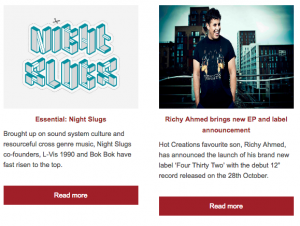Marketers globally, for a number of years now have been utilising social media platforms to increase both brand exposure, advertise new products/services, as well as other things. This is due to the fact that over 37% of the world’s population are active social media users. For a further regional breakdown of social media using populations, please click here.
There are various age groups that browse social media platforms such as Facebook, Twitter, Instagram, Snapchat, Youtube and Pinterest every single day and these platforms allow businesses to advertise on them for a relatively low cost.
Businesses, regardless of size are now using social media as their first port of call in regards to advertising, whether that’s creating a Facebook business page to gain brand exposure or setting up Intstagram or Twitter adverts that are aimed solely at the company’s target market. Please click here for a step-by-step guide on how to set up Twitter adverts.
There are also a number of other avenues to market said company, which range from creating launch events on Facebook to gauge the level of attendees and also engage with them, to running competitions and giveaways to increase page likes/followers, which in turn creates a consumer community for the company and maximises exposure. With social media platforms now being of paramount importance to companies, some now employ teams that will work solely on their social media operations, to ensure that their customer engagement and their online presence is of essence to the company’s values.
An example of this is Apple, since starting their Facebook account, they have generated 6.3 million followers. This allows them to post any new advertising material in regards to new products or services at no cost, which will reach a large majority of these Facebook users almost instantly. This is due to the fact that users not only like/follow their page but the majority of them also sign up for updates, which means they’re alerted when any new announcements are made, whether that’s a new product or a discount offer.
Throughout previous years, many companies have been targeting young people because they were the ones seen to be the only active social media users, however this could not be further from the truth. Every social media platform is used by people of all ages, cultures and annual incomes, which shows that the virtual marketing audiences of a number platforms are endless. To see a further breakdown of each social media platform’s audiences, please see here.
The growth in the use of smartphones across the world has now enabled businesses to get in touch with their customer bases instantly and virtual marketing has a lot to do with that. Not only do the majority of households in the western world have more than one personal computer in it, now 66% of the world’s population also owns a smartphone, which allows businesses and customers to engage on the move, as well as at home or at their desks.
Virtual marketing also covers a number of other marketing approaches, which range from email marketing and blogging to eWOM and ebooks. To learn more about the seven highly effective viral marketing techniques you should be using, please click here.
There is no sign of virtual marketing haltering in it’s growth, with the virtual world continuing to grow at a significant rate, which ultimately opens a number of potential possibilities for virtual marketing, it remains as one of the most important and effective avenues of marketing within an industry.
Despite it’s obvious advantages, these virtual marketing avenues can also have a hugely detrimental effect on the profitability of a business. An unethical advert or a poor piece of customer feedback can have a really negative effect on the organisation due to the fact that the nature of eWOM is instantaneous and can reach millions of people within a matter of minutes.
An example of this would be United Airlines and the viral video that was shared millions of times across the internet. The video saw airline staff violently dragging a passenger out of his seat and down the cabin before ejecting him from the aircraft due to the plane being overcrowded. This one video has had a hugely detrimental effect on the way that consumers now view United Airlines, which has reduced company profitability dramatically. For more information on the United Airlines incident, please click here.






